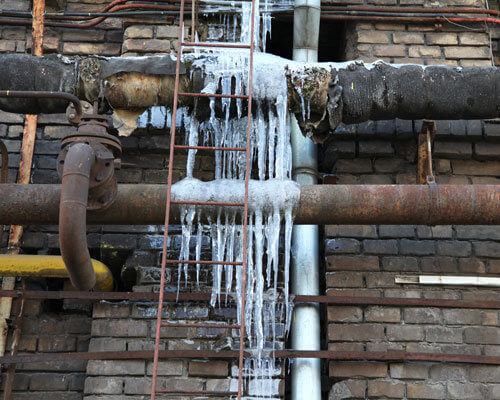Ways to Prevent Frozen Plumbing in Winter: Expert Guidance
Ways to Prevent Frozen Plumbing in Winter: Expert Guidance
Blog Article
The author is making several great pointers relating to How To Avoid Freezing Pipes overall in the article beneath.
:strip_icc()/snow-outdoor-faucet-pipes-4af65d1e5e904fb1aa7bf74071fe5d89.jpg)
Winter can wreak havoc on your plumbing, specifically by freezing pipelines. Below's exactly how to stop it from taking place and what to do if it does.
Intro
As temperatures decline, the danger of frozen pipelines increases, possibly bring about costly repair services and water damages. Recognizing exactly how to prevent frozen pipelines is crucial for property owners in chilly environments.
Prevention Tips
Insulating vulnerable pipelines
Wrap pipelines in insulation sleeves or make use of warmth tape to shield them from freezing temperature levels. Concentrate on pipelines in unheated or external locations of the home.
Home heating methods
Keep interior areas properly warmed, specifically areas with plumbing. Open up cupboard doors to allow warm air to circulate around pipelines under sinks.
How to determine icy pipelines
Search for reduced water flow from faucets, unusual smells or noises from pipelines, and visible frost on exposed pipelines.
Long-Term Solutions
Architectural adjustments
Think about rerouting pipes far from outside walls or unheated areas. Add additional insulation to attics, cellars, and crawl spaces.
Upgrading insulation
Buy high-grade insulation for pipes, attic rooms, and wall surfaces. Correct insulation aids preserve constant temperature levels and lowers the danger of icy pipes.
Protecting Exterior Plumbing
Yard hose pipes and exterior faucets
Disconnect and drain pipes garden pipes before wintertime. Install frost-proof faucets or cover outdoor faucets with shielded caps.
Comprehending Frozen Pipelines
What creates pipes to freeze?
Pipelines ice up when exposed to temperature levels below 32 ° F (0 ° C) for expanded periods. As water inside the pipelines freezes, it broadens, putting pressure on the pipe wall surfaces and potentially creating them to break.
Risks and damages
Frozen pipes can cause water system interruptions, home damages, and costly fixings. Ruptured pipes can flood homes and trigger substantial structural damages.
Indicators of Frozen Water Lines
Determining frozen pipelines early can avoid them from bursting.
What to Do If Your Pipelines Freeze
Immediate actions to take
If you suspect frozen pipes, keep faucets open to ease pressure as the ice thaws. Utilize a hairdryer or towels soaked in warm water to thaw pipelines gradually.
Verdict
Protecting against frozen pipelines requires positive measures and fast responses. By understanding the reasons, signs, and safety nets, homeowners can shield their pipes during cold weather.
5 Ways to Prevent Frozen Pipes
Drain Outdoor Faucets and Disconnect Hoses
First, close the shut-off valve that controls the flow of water in the pipe to your outdoor faucet. Then, head outside to disconnect and drain your hose and open the outdoor faucet to allow the water to completely drain out of the line. Turn off the faucet when done. Finally, head back to the shut-off valve and drain the remaining water inside the pipe into a bucket or container. Additionally, if you have a home irrigation system, you should consider hiring an expert to clear the system of water each year.
Insulate Pipes
One of the best and most cost-effective methods for preventing frozen water pipes is to wrap your pipes with insulation. This is especially important for areas in your home that aren’t exposed to heat, such as an attic. We suggest using foam sleeves, which can typically be found at your local hardware store.
Keep Heat Running at 65
Your pipes are located inside your walls, and the temperature there is much colder than the rest of the house. To prevent your pipes from freezing, The Insurance Information Institute suggests that you keep your home heated to at least 65 degrees, even when traveling. You may want to invest in smart devices that can keep an eye on the temperature in your home while you’re away.
Leave Water Dripping
Moving water — even a small trickle — can prevent ice from forming inside your pipes. When freezing temps are imminent, start a drip of water from all faucets that serve exposed pipes. Leaving a few faucets running will also help relieve pressure inside the pipes and help prevent a rupture if the water inside freezes.
Open Cupboard Doors
Warm your kitchen and bathroom pipes by opening cupboards and vanities. You should also leave your interior doors ajar to help warm air circulate evenly throughout your home.

As a passionate person who reads on Winter Plumbing Precautions: Preventing Frozen Pipes, I figured sharing that topic was important. Liked our post? Please share it. Let someone else find it. Thank you for your time spent reading it.
Click Here Report this page